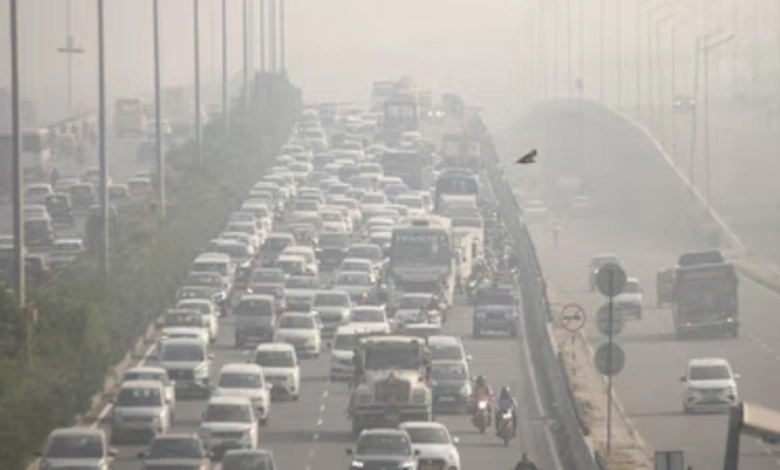A choking grey haze blanketed Delhi from late Wednesday into Thursday morning, turning the capital’s air into a health hazard that left residents battling stinging eyes, irritated throats, and prickly skin—a sharp departure from the clearer blue skies of the previous day.
The city’s air quality index (AQI) climbed to 311 by 4 p.m., placing it firmly in the “very poor” range, a jump of over 100 points from 202 the day before. This escalation stemmed from a toxic mix of smoke drifting in from stubble-burning fields in Punjab, illegal firecracker explosions celebrating Gurpurab across several neighborhoods, and stagnant local emissions pinned down by sluggish winds and cooling temperatures.
PM 2.5, the ultrafine particles spewed by burning activities, emerged as the primary culprit on Thursday, edging out the previous day’s blend of ozone and PM 2.5. This shift underscores a pivot from chemical reactions in the atmosphere to direct combustion sources fueling the crisis. (Sanchit Khanna/ HT Photo)
According to the Centre’s Decision Support System, crop residue fires in neighboring states accounted for 9.48% of Delhi’s PM 2.5 levels on Thursday—the season’s peak so far—with projections indicating a potential rise to 38% by Friday. Northwesterly winds are funneling the acrid plumes southward, exacerbating the buildup during this critical phase of the capital’s yearly winter pollution ordeal.
ALSO READ : Delhi’s Toxic Haze Deepens as Sluggish Winds Trap Pollutants
This time of year marks the height of Delhi’s air emergency, where falling mercury fosters temperature inversions that lock pollutants close to the ground, low wind speeds hinder dispersal, and seasonal farm fires from Punjab and Haryana amplify the threat. Historical trends pinpoint early November as the stubble-burning climax, with contributions hitting 35% on a single day last year and peaking at 48% in 2021.
Before Thursday’s spike, the highest farm-fire influence stood at 5.87% on October 28. Looking ahead, the system’s forecasts predict a modest dip to 25.3% on Saturday and 31.76% on Sunday, thanks to marginally stronger winds aiding some pollutant scatter—yet those same gusts will keep hauling in remote smoke.
“Local emissions piled up overnight on Wednesday from firecrackers and traffic, with winds barely stirring until midday Thursday, allowing the haze to thicken,” noted Sunil Dahiya, founder and lead analyst at environmental think tank Envirocatalysts. Expect westerly to northwesterly flows at higher altitudes to dominate the coming days, making stubble smoke a dominant factor.
